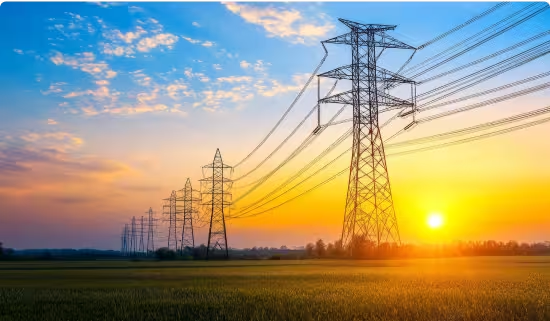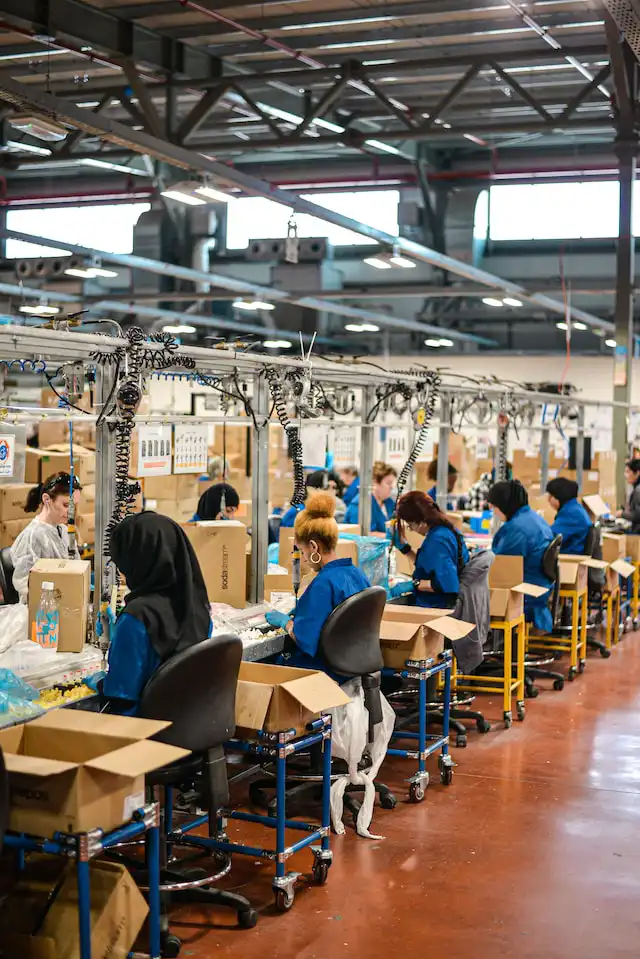
Indonesia Thermal Power Market Outlook to 2018
Led by Increasing Electricity Coverage and Private Producers
Region:Asia
Product Code:KR289
January 2015
85
About the Report
The report titled “Indonesia Thermal Power Market Outlook to 2018 - Led by Increasing Electricity Coverage and Private Producers” provides a comprehensive analysis of various aspects such as market size, segmentation and future projections of the thermal power market in Indonesia. This report also offers prevalent trends and developments in the industry, government regulations, SWOT analysis, STEEP analysis, Porter’s five force analysis and challenges in the thermal power industry in Indonesia. The report also covers the competitive landscape of the industry, complemented with the market share of private and public sector companies. Report also includes information on the major macroeconomic indicators affecting the market. Moreover, the report also offers information regarding the new technologies that are coming up in the market and the cost analysis for different types of technologies to produce power.
Thermal power remains the major contributor to the global power production and is the most extensively used form of power production in Indonesia as well. The thermal power generation method uses steam to run turbines and generate electricity. In the thermal power segment, coal remains the major contributor to power production. Indonesia is yet to achieve an electrification ratio of 100% and thus has a vast untapped market for thermal power. A rise in the production capacity of thermal power will be seen over the coming years to satisfy the rising demand and to enable wider access to the national electricity grid.
The Fast Track Electricity Program initiated by the government to ensure steady electricity supply has certainly helped to boost the electricity market, particularly the thermal power market. The major power plants coming up in the two phases of the FTP are thermal based. FTP phase-I has mostly coal fired power plants and FTP phase-II has a huge portion dedicated to geothermal power production.
Over the years, several laws such as Law No. 30/2009 and Geothermal Energy Law have been introduced in the country to support the rising demand of power by the growing economy and its units. These laws have helped boost the market and are expected to play an important role in the coming years with respect to increasing power supply. The production capacity of the market in the period of 2008-2013 grew at a CAGR of ~% to reach ~ MW in 2013. The production volume on the other hand grew by ~% in 2013 and reached a total output of ~ GWh. The consumption volume of Indonesia’s thermal power was equivalent to ~ thousand BOE in 2013, up from ~ thousand BOE in 2012.
Majority of the market is controlled by PLN with a market share of ~% in production in 2013. Coal is expected to remain the most used source of energy to produce power by producing ~ GWh of power in 2013. It was the highest contributor during the past few years as well. Households have remained the highest consumers of thermal power over the period of 2008-2013 with their consumption level at ~ thousand BOE in the year 2013. The consumption value of thermal power market in Indonesia is expected to augment at a CAGR of about ~% over the period of 2013-2018 reaching revenue worth USD ~ million in 2018. PT PLN is expected to maintain dominance in the market backed by the government and coal is expected to maintain its status as the highest contributor to the production total in the coming years.
Key Topics Covered in the Report:
- The market size of Indonesia Thermal Power Market in terms of Production Capacity
- The market size of Indonesia Thermal Power Market in terms of Production Volume and Value
- The market size of Indonesia Thermal Power Market in terms of Consumption Volume and Value
- Market segmentation of Indonesia’s Thermal Power Market on the basis of Types of Sectors of Consumption
- Market segmentation of Indonesia’s Thermal Power Market on the basis of Types of Fuel Source
- Market segmentation of Indonesia’s Thermal Power Market on the basis of Types of Producer – Government and Private
- Trends and Developments in Indonesia’s Thermal Power Market
- SWOT analysis of Indonesia’s Thermal Power Industry
- Porter’s 5 Force Analysis of Indonesia’s Thermal Power Industry.
- Government Policies and Regulations in Thermal Power Market of Indonesia.
- Cost Analysis for Power Production from Different Sources.
- Competitive Landscape of IPPs in Thermal Power Industry in Indonesia
- Indonesia’s Thermal Power Market Future Outlook and Projections
Products
Thermal Power, Geothermal, Coal, Gas, Oil, Biomass
Companies
PT PLN (Persero), Java Power, Bhimasena Power, Chevron Indonesia, PT Cikarang Listrindo, Cirebon Electric Power, PT Sumber Segara Primadaya
Table of Contents
TABLE OF CONTENTS
1. Indonesia's Thermal Power Market Introduction
Scenario of the Global Power Market
2. Supply Chain Analysis of Thermal Power in Indonesia
Stakeholders in the Industry
Supply Chain of Power in Indonesia: Before and After Law No. 30/2009
3. List of Major Thermal Power Stations in Indonesia
4. List of Upcoming Thermal Power Projects in Indonesia
5. Cost Analysis for Power Production from Different Sources
Assumptions
6. Indonesia's Thermal Power Market Size, 2008-2013
6.1. By Production Capacity, 2008-2013
6.2. By Production Volume, 2008-2013
6.3. By Production Value, 2008-2013
6.4. By Consumption Volume, 2008-2013
6.5. By Consumption Value 2008-2013
7. Indonesia's Thermal Power Market Segmentation
7.1. By Types of Sectors, 2008-2013
7.2. By Types of Fuels, 2008-2013
7.3. By Government and Private Sector
7.3.1. By Production Volume, 2008-2013
7.3.2. By Production Value, 2008-2013
8. Trends and Developments in Indonesia's Thermal Power Market
9. SWOT analysis of Indonesia's Thermal Power Industry
10. STEEP Analysis of Indonesia's Thermal Power Industry
11. Porter's 5 Force Analysis of Indonesia's Thermal Power Industry
12. Government Policies and Regulations in Thermal Power Market of Indonesia
13. Snapshot of Auxiliary Industries for Thermal Power Market in Indonesia
14. Recent Industrial Activities in Thermal Power Market in Indonesia
15. Historical and Current Challenges in the Indonesia Thermal Power Market
16. Market Share of Major Players in Thermal Power Industry in Indonesia, 2008-2013
17. Snapshot of Major Companies in Thermal Power Market in Indonesia
17.1. Distinction between PLN and IPPs
17.2. PT PLN (Perusahaan Listrik Negara)
17.2.1. Overview
17.2.2. Dominance in Power Industry
17.2.3. Key Financials
17.3. Competitive Landscape of IPPs in Thermal Power Industry in Indonesia
18. Indonesia Thermal Power Market Future Outlook and Projections by Consumption Value, 2014-2018
18.1. Impact of High Growth Targets
18.2. Impact of Subsidies
18.3. Impact of Fast Track Electricity Programmes
18.4. Geothermal Energy Law
18.5. Promotion of PPP Projects in Power Generation Market
18.6. Advent of Clean Coal Technology
19. Macroeconomic Factors of Indonesia's Thermal Power Industry
19.1. Number of Households in Indonesia, 2008-2018
19.2. GDP of Indonesia, 2008-2018
19.3. Electrification Ratio in Indonesia, 2008-2018
19.4. Energy Intensity in Indonesia, 2008-2018
19.5. Infrastructural and Capital Spending in Indonesia, 2008-2018
20. Appendix
20.1. Market Definitions
20.2. Abbreviations
20.3. Research Methodology
Data Collection Methods
Approach
Variables (Dependent and Independent)
Multi Factor Based Sensitivity Model
Final Conclusion
20.4. Disclaimer
Why Buy From Us?

What makes us stand out is that our consultants follows Robust, Refine and Result (RRR) methodology. i.e. Robust for clear definitions, approaches and sanity checking, Refine for differentiating respondents facts and opinions and Result for presenting data with story

We have set a benchmark in the industry by offering our clients with syndicated and customized market research reports featuring coverage of entire market as well as meticulous research and analyst insights.

While we don't replace traditional research, we flip the method upside down. Our dual approach of Top Bottom & Bottom Top ensures quality deliverable by not just verifying company fundamentals but also looking at the sector and macroeconomic factors.

With one step in the future, our research team constantly tries to show you the bigger picture. We help with some of the tough questions you may encounter along the way: How is the industry positioned? Best marketing channel? KPI's of competitors? By aligning every element, we help maximize success.

Our report gives you instant access to the answers and sources that other companies might choose to hide. We elaborate each steps of research methodology we have used and showcase you the sample size to earn your trust.

If you need any support, we are here! We pride ourselves on universe strength, data quality, and quick, friendly, and professional service.















